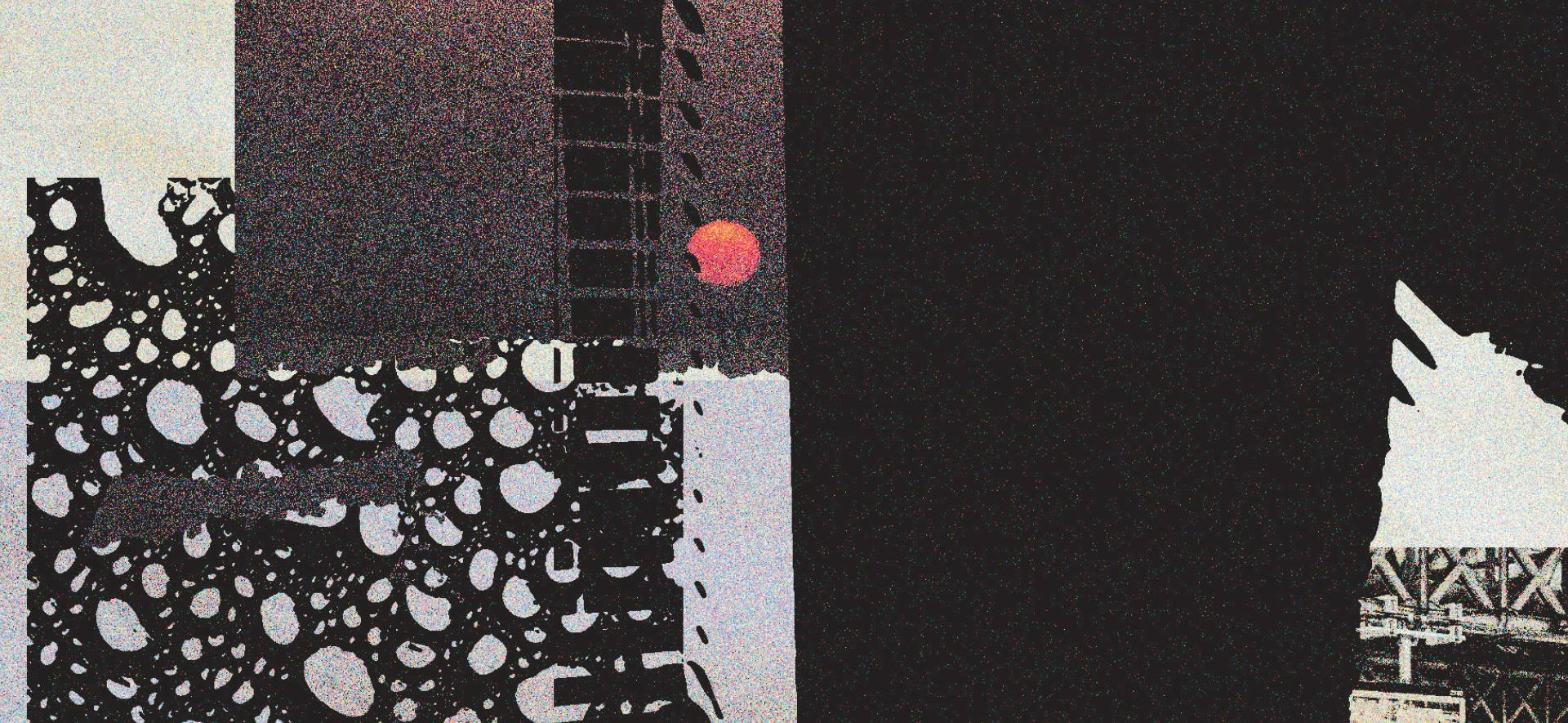
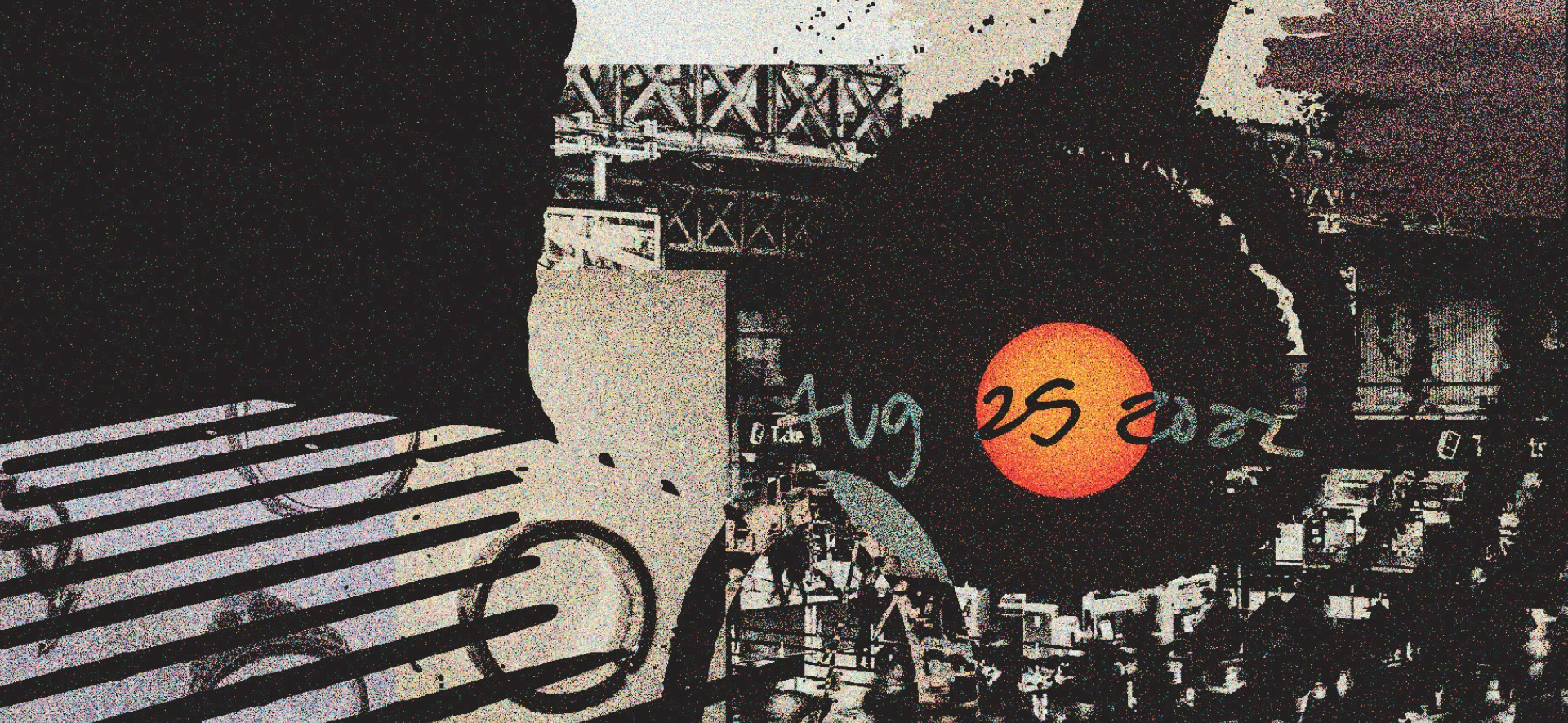

Images taken on Pixel 3a and gathered from Pexel, Unsplash, etc.
Edited in Adobe Illustrator, 3508px x 2480px.
PERCIEVING TIME COLLAGE
List 10 items/concepts that describe your routine. Combine them in a digital collage and submit it at the end of this class.
1. Blinds (blinds + shadows from blinds)
2. Temperature (blue overlaying color in bottom left)
3. Wet hair (water droplets middle left)
4. Light (one sun rising and one setting)
5. Jewelry (my jewelry)
6. Watch (my watch)
7. Crowds (crowded subway in the bottom right)
8. Bike (single wheel in the bottom middle - it's a little hard to see because it's in the
difference blending mode)
9. Journal (written date in middle right)
10. Pillow (pillowcase texture most visible in top right)
List 10 items/concepts that describe your routine. Combine them in a digital collage and submit it at the end of this class.
1. Blinds (blinds + shadows from blinds)
2. Temperature (blue overlaying color in bottom left)
3. Wet hair (water droplets middle left)
4. Light (one sun rising and one setting)
5. Jewelry (my jewelry)
6. Watch (my watch)
7. Crowds (crowded subway in the bottom right)
8. Bike (single wheel in the bottom middle - it's a little hard to see because it's in the
difference blending mode)
9. Journal (written date in middle right)
10. Pillow (pillowcase texture most visible in top right)
The passage of time can be marked by many objects and elements that we encounter in our daily life. I focused on subtle elements in my daily routine, elements that have sunk into the background despite having regular appearances in my day. Except for journaling, I rarely consciously take note of these elements at all. I also tried to maintain a loose chronological structure in the collage: the morning elements are generally closer to the left, and the evening elements are closer to the right. I used image tracing to split images into many small color blocks, and expanded and ungrouped them to “tear” them. I incorporated this into the collage to make it resemble a physical collage.
I start my day by taking a shower. This year I'm trying to take showers early in the morning, right before or at sunrise. When I look outside, the sky is still dark behind the blinds. Stepping out of bed, the air is cold. I try not to think about how tired I am and how much I miss the warmth of the bed. I keep the lights off. I shower, and return to my room with wet hair. It takes a long time to dry, and I spend the beginning of my day with wet hair and a cold head.
At that point the sun is up, and the sky outside brightens the room. I put on my jewelry and my watch. I would say that I’d use my watch to check the time. But, despite having one, I usually check my phone instead just out of habit. Once I leave my room to go outside, I am surrounded by people, each going their own direction with their individual plans.
I spend most of my day commuting by bike or walking around from class to class. I am always a little nervous that my bike will get stolen because I just recently bought it off of Craigslist, and I got a really good deal for it. Every time I lock it, a little piece of me in the back of my mind worries about if I’ll only have a front wheel left behind when I get back.
When I return home, I finish working on assignments, check my email, relax, and get ready for bed. Each night, I make sure to journal before bed. For me, it’s less about the writing and more about proving to myself that I can be consistent with something. I included a date in the collage, to reference the dates that I write at the top of each entry. Finally, I get into bed, put my head on my pillow, and sleep.
Pixel 3a, edited in Adobe Premiere Pro, 1920p x 1080p.
Duration: 0:40
PRESENT PAST
Reverse a short video in Adobe Premiere, explore what visuals you can create. Do not use sound.
I wanted to explore natural and artificial lighting and its correspondence to how we
experience time. Watches and clocks are tied to the sun by their predecessors, sundials.
Reverse a short video in Adobe Premiere, explore what visuals you can create. Do not use sound.
I wanted to explore natural and artificial lighting and its correspondence to how we
experience time. Watches and clocks are tied to the sun by their predecessors, sundials.
I filmed a watch that was cast in varying levels of sunlight in a 23-minute time-lapse
(from 7:23 -7:46pm) as the sun set. The lighting transitions from warm golden hour sunlight, to cooler twilight, and then lamp light.
(from 7:23 -7:46pm) as the sun set. The lighting transitions from warm golden hour sunlight, to cooler twilight, and then lamp light.
After importing it into Premiere Pro, I enhanced the colors and reversed the footage. I added motion tracking to the second hand to add more movement to the footage. I also tried to make the video less repetitive by adding a digital zoom out which slowly reveals new (but still unfortunately mundane) elements in the frame.
Canon EOS M50 and Zoom - H1n 2013, edited in Adobe Premiere Pro, 1920p x 1080p.
Duration: 1:17
Duration: 1:17
PRESENT PAST, SOUND
Make a 1-5 minute video that incorporates visuals and sound. Explore how these two elements interact to evoke different experiences of the work.
Initially, I planned to focus on more static footage with some interjected movement (that would be filmed behind me while riding a bike), but those plans fell through. I started this project thinking about surveillance, liminal spaces, public indoor and outdoor spaces, and the sounds that correspond to those elements. I ended up focusing more on movement than at first, filming behind me while walking through the DC metro, parking garages, or the park near my house. I also interjected this with static footage of Richmond and the metro.
Make a 1-5 minute video that incorporates visuals and sound. Explore how these two elements interact to evoke different experiences of the work.
Initially, I planned to focus on more static footage with some interjected movement (that would be filmed behind me while riding a bike), but those plans fell through. I started this project thinking about surveillance, liminal spaces, public indoor and outdoor spaces, and the sounds that correspond to those elements. I ended up focusing more on movement than at first, filming behind me while walking through the DC metro, parking garages, or the park near my house. I also interjected this with static footage of Richmond and the metro.
The video starts with concrete stairs from inside a parking garage, and transitions to other indoor public areas. I overlaid the static footage of concrete stairwells with moving footage of the brutalist DC metro and escalator stairs to make it more engaging. I use their similarities to blend the two visuals together. The footage transitions to the metro, then to city streets (both in Richmond and Fairfax), and ends in the park.
The audio slowly builds up to a crescendo at the end of the video. In the beginning, I primarily used ambient noise from the park. From that point on, I layered on sounds recorded from street musicians near GRC, walking inside a parking garage, up echoey staircases humming LED lights, passing cars, crowds on the DC metro, etc.
Unfortunately, a good portion of my audio recordings from the streets of DC is unusable because the wind interfered with the audio distorting it beyond recognition. However, some bits and pieces of the distorted audio were salvageable, so I spliced some parts together. I even included wind interference in the final seconds of the video to help with the crescendo.
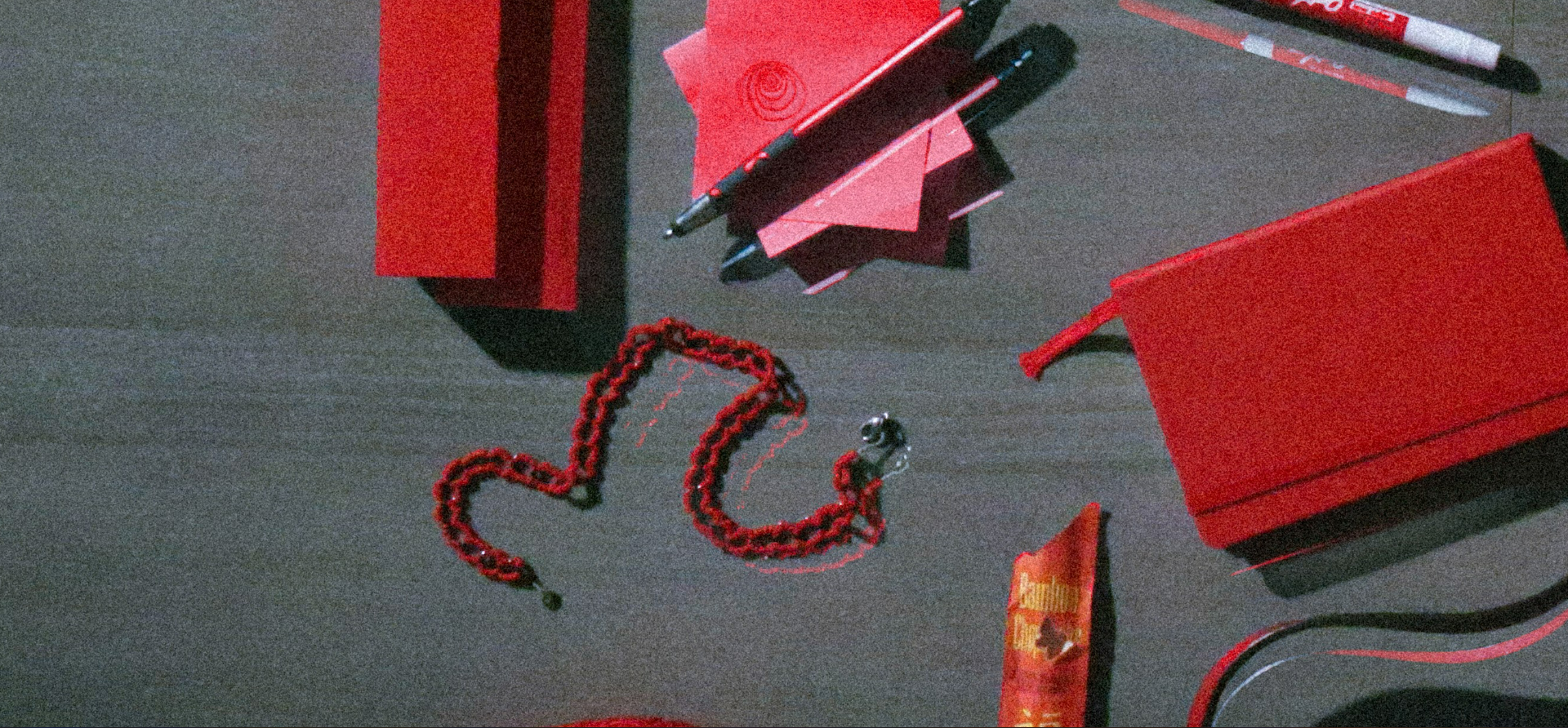
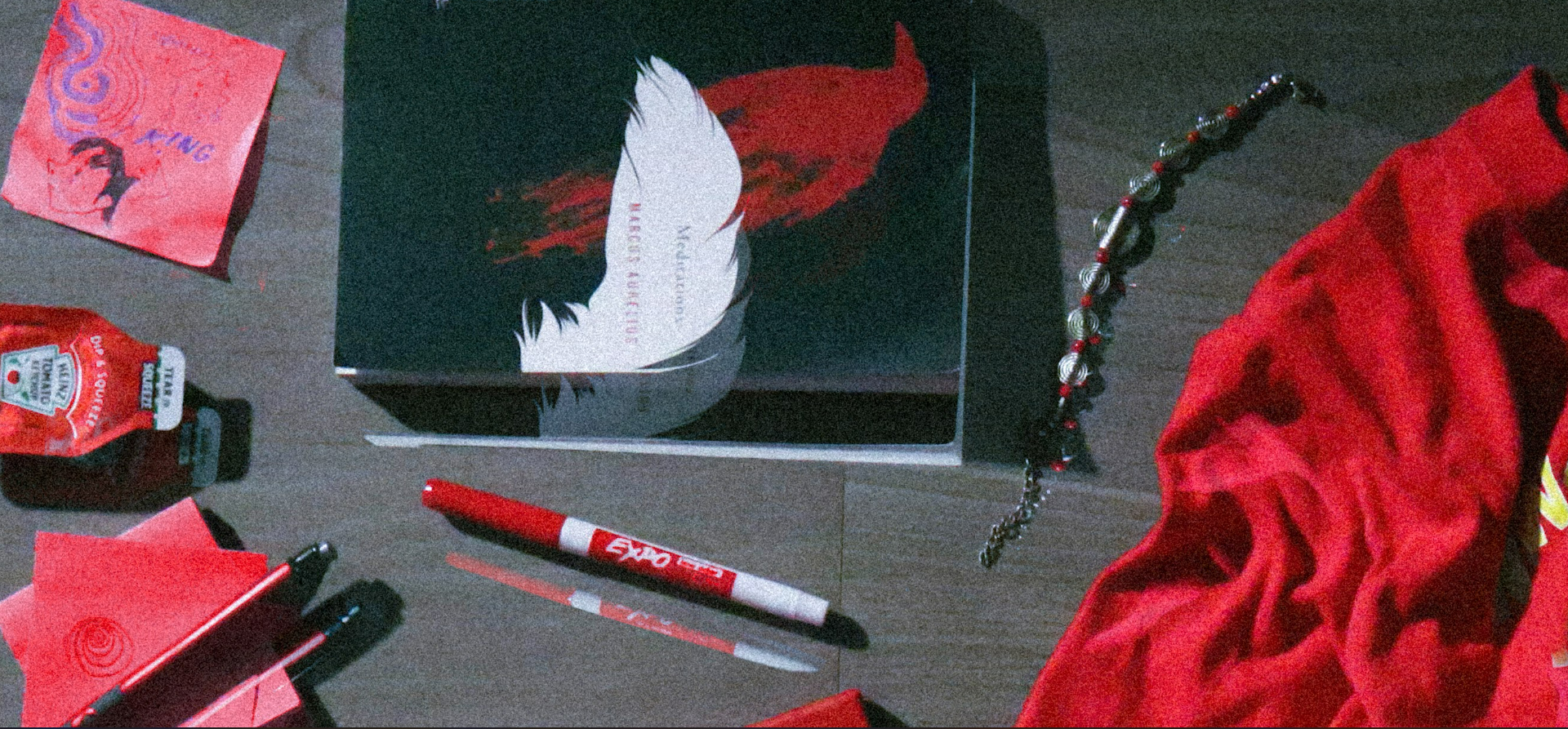
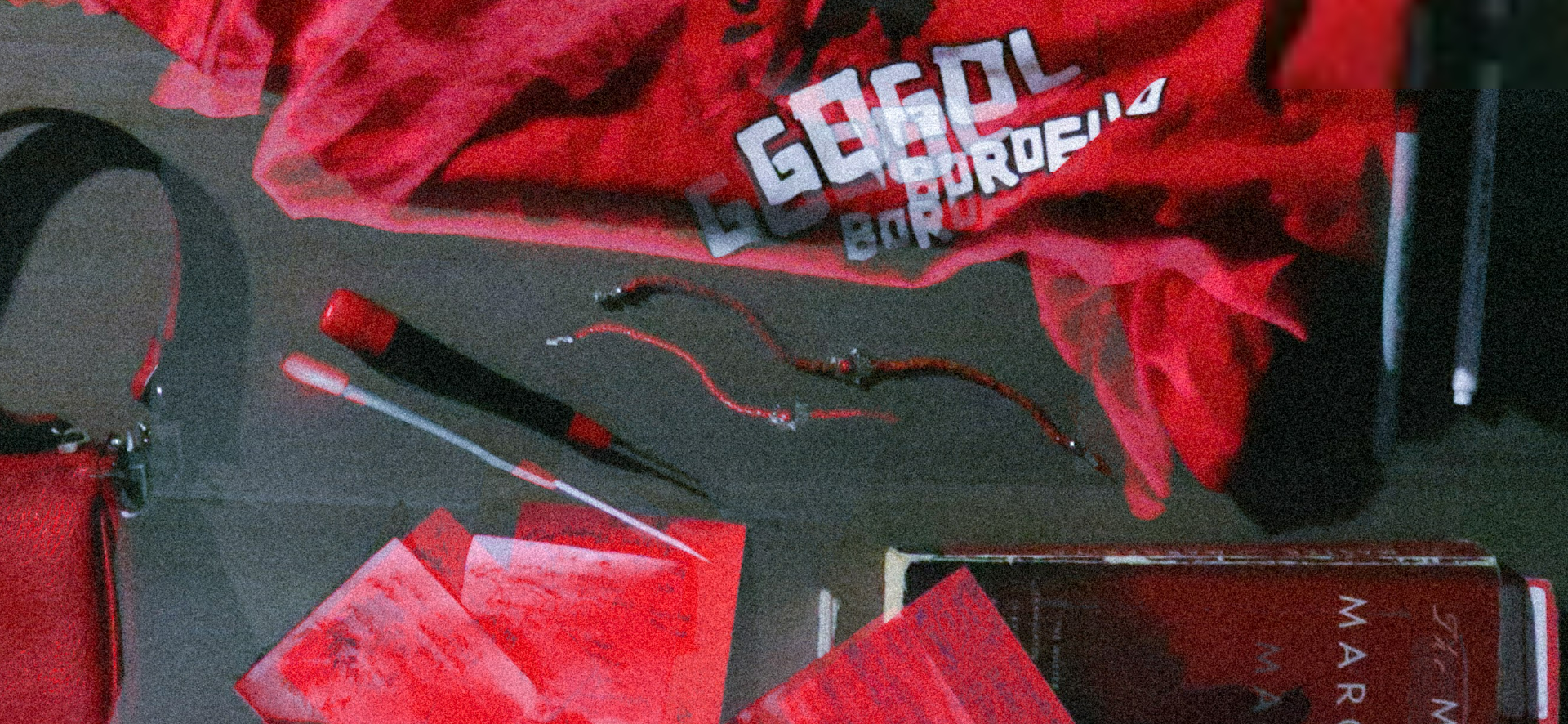
Canon EOS M50, edited in Adobe Photoshop and Adobe Illustrator, 15,000px x 10,000px.
MOMENT IN TIME, STAGED PHOTO
Stage a photograph with an inserted element: you or an object. If you choose to insert yourself, you can think of this as a “performance still.” What meaning is made by your intervention? How does this “moment in time” work visually and conceptually as a single image? What temporal narrative or implication is relayed by this “single frame”? Can you tell a story in one shot? How would you make a video in one frame?
Stage a photograph with an inserted element: you or an object. If you choose to insert yourself, you can think of this as a “performance still.” What meaning is made by your intervention? How does this “moment in time” work visually and conceptually as a single image? What temporal narrative or implication is relayed by this “single frame”? Can you tell a story in one shot? How would you make a video in one frame?
The staged photo includes several red objects gathered from my room. My inserted element is the color of the curated objects. I adjusted the color of the pink sticky notes to match the rest of the red items.
I wanted to present the objects as if they were curated for an exhibition or a museum display: The belongings of a celebrity, artifacts from another time, or personal items pulled from rubble.
I was shooting in a low light environment so that I could control the lighting conditions. I used my phone’s flashlight to shine light on the items from different angles and create many shadows at once to imply that the items are on display. I experimented with overlaying two photos with different shadows shot from a similar angle. This way, overlaying them would not distort the final image. This inadvertently created some inconsistencies in how the two images lined up. The inconsistencies resemble reflections on glass, and this fits with the intention. The grain makes the image more pleasing when blown up on a large projection.
Canon EOS M50, edited in Adobe Premiere Pro, 1920p x 1080p.
Duration: 0:50
MOMENT IN TIME, ANIMATION
Make a 1 minute video presentation using rotoscoping or stop motion animation. The video should also have sound. Consider musical sound, the context of a song, its meaning/history and potential disorienting/stabilizing qualities that interact with the moving image.
Make a 1 minute video presentation using rotoscoping or stop motion animation. The video should also have sound. Consider musical sound, the context of a song, its meaning/history and potential disorienting/stabilizing qualities that interact with the moving image.
I took several photos of folded paper as I went through the process of creating an origami crane. I centered each image on the paper, aligning it to create a smooth stop-motion animation. Then, I reorganized the images to synchronize to the song fz pseudotimestretch+e+3 [138.85] by Aphex Twin. I added morph cut transitions and cut between animations of different resolutions.
This piece is meant to examine muscle memory. Specifically, the experience of being able to do something better when you are not concentrating on it. Like playing a piano piece you remember from when you were little or remembering exactly where the keys are on a computer keyboard. When you become so familiar with an action that you could do it with your eyes closed, your mind begins to gloss over the process while your hands, for example, still remember the motions. After a while, if you stop doing this familiar activity, or just stop thinking about it consciously, it can become difficult to do it while thinking about it. It is a weird feeling to passively recall the process with your body while not actively remembering. I wanted to explore this disconnect in the video.
I hope put the viewer in the mind of someone trying to remember how to fold an origami paper crane. Oftentimes when relying on muscle memory, thinking about what to do next makes it more difficult to remember. I tried to illustrate this through how the origami gets folded on its own, without the intervention of the hands. I only include the hands twice. In the beginning when the character is trying to force the muscle memory and when they hold the finished product. The hands represent conscious thought. It remembers the beginning and end, but it skips over the motions in between, and later it can’t actively recall them.
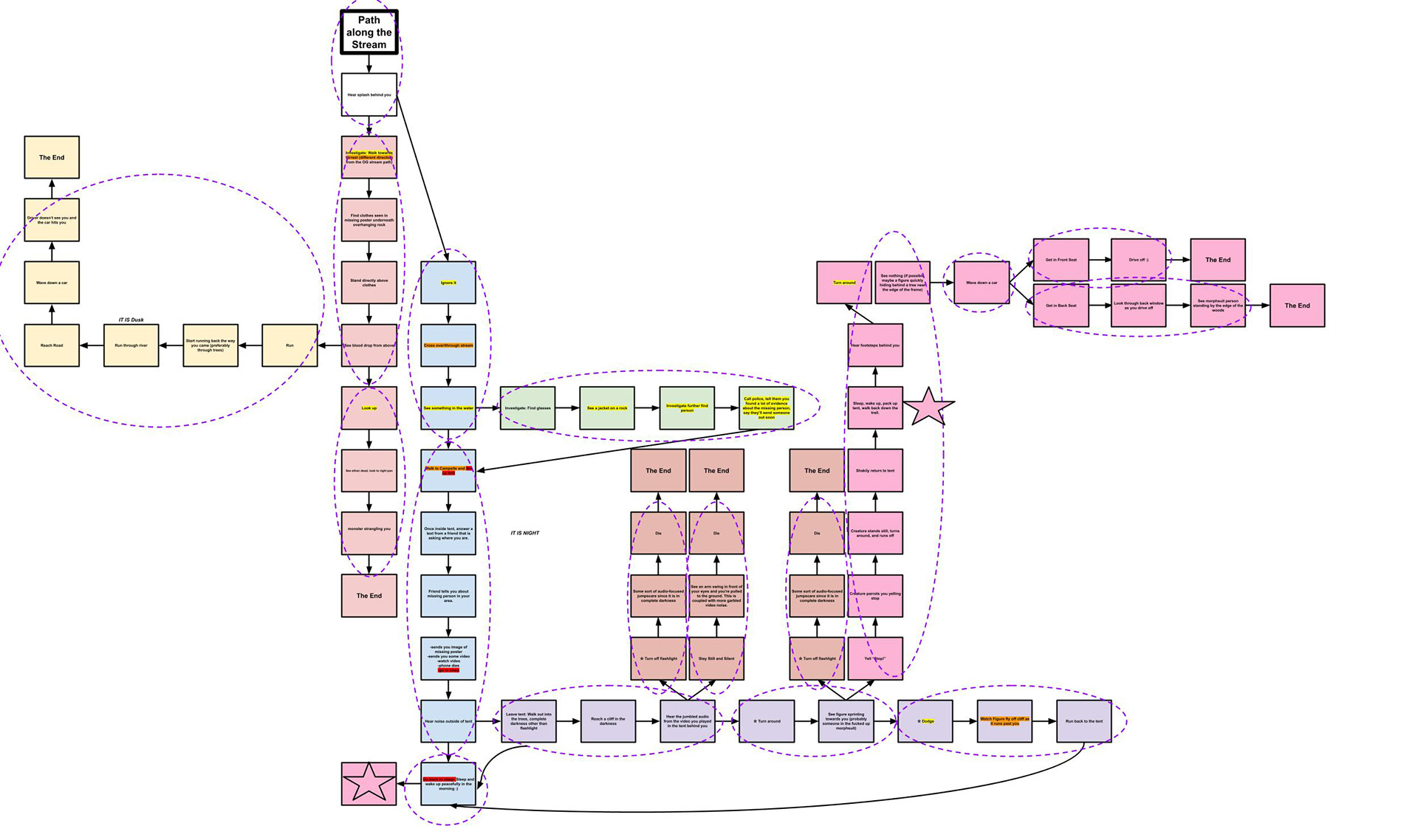
Scene flowchart 1

Scene flow chart 2
GoPro and iPhone, edited in Adobe Premiere Pro, 1280p x 720p.
Duration: Approximately 40 minutes total
FINAL PROJECT, LIVE ART
Group project. Prompt: Live Art.
Switchback is an interactive video project that I co-created with Victor Romanko and Ethan Drake. Our goal was to craft a paradoxical mystery that challenges the viewer's perspective.
Group project. Prompt: Live Art.
Switchback is an interactive video project that I co-created with Victor Romanko and Ethan Drake. Our goal was to craft a paradoxical mystery that challenges the viewer's perspective.
As a team, we utilized story structure flowcharts, wrote dialogue, and gathered props. I was involved in scheduling, scripting, filming, editing, uploading, and thumbnail design. Effective coordination and time management were essential. To create a first-person perspective, we used a GoPro and all took turns playing the main character. Victor and Ethan had most on-screen and speaking roles.
Switchback was uploaded to Youtube, and we used the end screen video suggestions mechanic to display different choices.
Our project invites viewers to make choices that unwrap the mystery, require quick decisions, have you relive an experience from a different perspective, or bind you to an inescapable fate.
